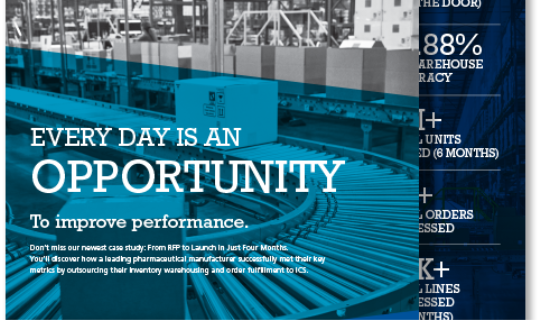Finding the right partner for a cold commercial supply chain
By Christopher Engel
Complexity of commercial drug manufacturing supply chains compounds the issue
Thousands of commercial drug products (finished drugs ready for patients) on the market today require temperature control before, during, and after manufacturing. Similarly, drug substances and the active pharmaceutical ingredients (APIs) at the heart of a drug product also require a strict cold chain.
Furthermore, APIs are often commonly supplied from one or more sources, which are then received by one or more contract development and manufacturing organization (CDMO) partners to manufacture. Pharma’s somewhat unique supply chain provides needed economies to help keep drugs affordable, but its global multi-faceted character adds logistical complexity to every aspect of development, manufacture, and distribution.
Find a solution and a partner fit for your drug and drug strategy
Successful cold chain logistics requires highly choreographed shipping schedules, cold storage infrastructure, thermally controlled transport packaging technology, and adherence to one of the heaviest regulatory burdens faced by industry today. To overcome these and other challenges to pharma’s business model, most of the industry relies on expert, experienced third-party logistics suppliers (3PLs) to manage temperature-controlled distribution and storage of their drug substances and drug products. According to Research and Markets the cold chain logistics market for the pharmaceuticals industry is poised to grow by $11.6 billion from 2023 to 2027, accelerating at a compound annual growth rate (CAGR) of 9.51 percent during the forecast period.[1]
Time and temperature wait for no one in the supply chain
Every drug product being developed today must have a validated plan to support manufacture, storage, and compliant shipping from every facet of production and distribution to prevent a temperature excursion of any kind in storage or transit. This is increasingly challenging, especially for CGTs, which require extremely low, often cryogenic temperatures to remain viable in transit.
The transfer of human embryos during in vitro fertilization (IVF) is another example of very sensitive cells requiring cold chain logistics. A fresh embryo transfer typically occurs two to five days after a patient’s eggs are retrieved. According to a prominent fertility clinic, the main benefit of a fresh embryo transfer is that there is a shorter time to conception since there is only a five-day waiting period between egg retrieval and embryo transfer into the uterus. However, many insurance companies do not cover the cost of cryopreservation, so for financial reasons some patients must opt for a fresh transfer.[2]
When IVF was first developed, a fresh transfer was the only type available because the science of cryopreservation was in its infancy. Now, 40-plus years later, cryopreservation techniques, culture media (the environment where the embryo grows), and advanced reproductive technologies have advanced tremendously, making frozen embryo transfers commonplace. However, because of its efficacy frozen embryo transfers are now the preferred transfer type, even though both are used regularly.[2] Regardless of the methodology, neither transfer can tolerate a temperature excursion in transit.
An excursion event occurs when a time and temperature-sensitive pharmaceutical product (TTSPP) is exposed to temperatures outside the range(s) prescribed for storage and/or transport. Also applicable during the manufacture and transportation of API prior to receipt at pharmaceutical manufacturing sites. Temperature ranges for storage and transport may be the same or different; they are determined by the product manufacturer based on stability data. A temperature excursion can render the sample or product unsuitable or unviable for administration without undergoing further processes to ensure safety and efficacy, otherwise the safety of the patient is put at severe risk and thus must be avoided.
Drug development is intensive, complicated, and not necessarily linear. Logistics needs and partner selection may not be fully decided until the point of contract signing with CDMOs or other drug companies. A lot is at stake and for the sake of business continuity and commercial timelines, there may be precious little time to find the right solution and solution partner for the potential blockbuster in waiting.
Cold commercial supply chain solutions need strategic consideration
Lack of cohesive cold commercial supply chain strategy is a pain point World Courier has encountered time and again with its customers. Few companies come to the table completely prepared and the issue is compounded the smaller the developer is and the more specialized or novel their drug. We have found that focusing attention on the following fundamentals will help you identify viable partners that can meet the needs of your specific cells, molecule, or compound:
- Define your manufacturing supply chain, incumbent geographies, and required production timelines clearly. Manufacturing and commercial strategies dependent on multiple partners will not survive or be compliant if this is not clearly articulated in the request for quotation (RFQ). Seek out what is best for the product and serves its best interests in the market, even if it means adding more technologies to the container portfolio. True for both drug product and drug substance, there is no one size fits all. The idea is to introduce flexibility and allow vendors room to provide viable options to overcome geographic or regulatory hurdles.
- Provide complete product temperature control data and other pertinent product information. The more data the better. Understanding the potential of temperature excursions and the exact parameters to maintain is critical, fundamental information that drives myriad technical and operational aspects of the eventual solution.
- Avoid issuing a narrow thermal containment system (TCS) specification if possible. Logistics providers, including World Courier, have decades of experience developing and implementing TCS technologies to effectively and efficiently distribute temperature-sensitive drugs. Providing latitude here lets a vendor make its best fit-for-purpose proposal based on experience and leveraging either its own proprietary technology or the systems from select and strongly-allied technology partners.
- Bring to light possible regulatory constraints or compliance issues affecting logistic solutions. Sometimes certain decisions have already been made in support of efficient regulatory strategy and process validation. Take TCS technology selection for example, some 3PLs may not be able to cope effectively with the container specification and might have trouble delivering a solution that forces a technology they are not currently marketing.
- Seek more sustainable, efficient container solutions. For most sensitive life-science related materials, excursion-free global cold chain transit relies heavily on the TCS technology one responding 3PLs offers versus another. One thing to look at very closely and to understand clearly from an RFQ response is the long-term operational cost and the sustainability (materials and other design aspects affecting the environmental impact) of the TCS solution. The design must offer flexibility accommodating specific and changing temperatures, distances, and other variables. World Courier’s Global Thermal Container (GTC) solution for example is engineered specifically to deliver several key attributes today’s sustainable cold chain demands:
Ultimately, the goal of this portion of the RFQ is to gain access to the best container solution — technology capable of being seamlessly configurable to the product, able to provide secure reliable temperature control at reduced cost while assuring uneventful, excursion-free shipping operations.
Help yourself find the best solution and solutions partner
Ultimately the goal is to craft an RFQ that attracts the best solution and the best vendor to deliver it. Experience is a great teacher, but not every organization seeking commercial supply chain services has it, especially start-ups introducing brand new product and manufacturing supply lines and closed-loop operations. If technologies are too narrowly defined and details regarding product requirements, partners, and global commercialization plans are poorly defined or missing, it will be reflected in the proposals that the effort attracts. Flexibility in the RFQ is sure to translate into a better comprehensive and compliant solution — which in turn will identify the best solutions partner.




.jpg?h=320&iar=0&w=540&useCustomFunctions=1¢erCrop=1&hash=FFAD46B50DC7BAF96943931DC619FE9D)
